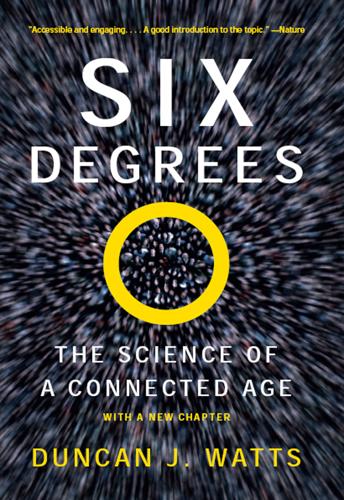
Six Degrees: The Science of a Connected Age
by
Duncan J. Watts
Published 1 Feb 2003
The Geometry of Biological Time (Springer, Berlin, 1990). The Small-World Problem The famous Psychology Today paper that everyone cites when they talk about Milgram’s work is Milgram, S. The small world problem. Psychology Today, 2, 60–67(1967). A better reference, however, is a paper that Milgram published two years later with his graduate student, Jeffrey Travers. It contains considerably more detail than the Psychology Today article, and although it isn’t quite as fun, it is actually much clearer. Travers, J., and Milgram, S. An experimental study of the small world problem. Sociometry, 32(4), 425–443 (1969). The very first study of the small-world problem was by Manfred Kochen and Ithiel de Sola Pool, who circulated their results as a working paper almost ten years before Milgram conducted his experiment.
…
We have also learned a good deal about this six degrees problem, which is not an urban myth at all but a sociological research project with a storied history. THE SMALL-WORLD PROBLEM IN 1967, THE SOCIAL PSYCHOLOGIST STANLEY MILGRAM PERFORMED a remarkable experiment. Milgram was interested in an unresolved hypothesis circulating in the sociological community of the day. The hypothesis was that the world, viewed as an enormous network of social acquaintances, was in a certain sense “small” that is, any one person in the world could be reached through a network of friends in a only a few steps. It was called the small-world problem, after the cocktail party banter in which two strangers discover that they have a mutual acquaintance and remind each other what a “small world” it is (this happens to me a lot).
…
(McGraw-Hill, New York, 1992). A detailed description of his obedience experiments is in Milgram, S. Obedience to Authority: An Experimental View (Harper & Row, New York, 1974). So What Did Milgram Really Show? Judith Kleinfeld’s paper that exams the history and empirical validity of the small-world problem is Kleinfeld, J. S. The small world problem. Society, 39(2), 61–66 (2002). The most significant follow-up study to the original experiment is one that Milgram conducted with another student, Charles Korte, in which they attempted to connect a white population of senders in Los Angeles with white and African-American targets in New York: Korte, C., and Milgram, S.
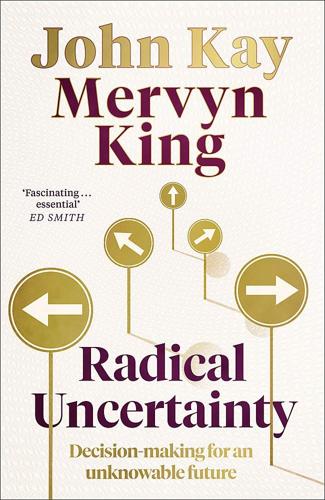
Radical Uncertainty: Decision-Making for an Unknowable Future
by
Mervyn King
and
John Kay
Published 5 Mar 2020
The strategic purpose is specific – it is not an injunction to ‘conquer space’ or ‘be the world’s most respected space exploration agency’, the type of platitude adopted by too many public sector agencies today. The next step, given Candler’s specific predictive brief, is for him to decompose that relatively large-world problem into small-world problems capable of solution. These small-world problems may be resolved by applying general models (the equations of aerodynamic flow) or ones unique to that particular large world (the heat transfer generated by the arrival of a craft in the atmosphere of Mars). The process of decomposition in turn identifies key issues for research.
…
And we do not construct these narratives in isolation. We discuss them with family and friends. We take advice from professionals. We benefit from the collective intelligence accumulated and readily available in the various communities in which we live. We are not defective versions of computers trained to optimise in small-world problems, but human beings with individual and collective intelligence evolved over millennia. Evolution is smarter than economists The discovery of the theory of evolution was a seminal moment in human thought. But throughout the century that followed the publication of Charles Darwin’s work, the application of evolutionary theory in biology, and even more outside it, lacked rigour.
…
And as with the machine that plays chess or Go, the progress of patients provides feedback on how well the program is performing, although such feedback is never as rapid or as clear as in these games. A computer can maintain and search the entire corpus of medical knowledge better and more quickly than the most distinguished of medical academics. The power of these methods will improve and speed up the process of diagnosis and may even displace the doctor in many well-defined ‘small world’ problems. But we expect that it will be highly skilled and experienced doctors, aided by algorithms and data-driven treatment protocols, who will continue to attract patients. One of the authors is still alive because the old-fashioned, intuitive but experienced doctor – whom he initially viewed sceptically – pursued the question of ‘What is going on here?’

On the Edge: The Art of Risking Everything
by
Nate Silver
Published 12 Aug 2024
But there’s a larger lens, too. Effective altruism, and the adjacent but more loosely defined intellectual movement called “rationalism,” are important parts of the River on their own terms. In some ways, in fact, they are the most important parts. Much of the River is concerned with what philosophers call “small-world problems,” meaning tractable puzzles with relatively well-defined parameters: how to maximize expected value in a poker tournament, or how to invest in a portfolio of startups that brings you upside with little risk of ruin. But in this final portion of the book, we’re visiting the part of the River where people instead think about open-ended, so-called grand-world problems: everything from where best to spend your charitable contributions to the future of humanity itself.
…
But in this final portion of the book, we’re visiting the part of the River where people instead think about open-ended, so-called grand-world problems: everything from where best to spend your charitable contributions to the future of humanity itself. Grand-world problems are much easier to screw up, and the consequences for screwing up are much bigger. If a Riverian type can mess up as badly as SBF did on a congressional primary—a small-world problem—think about one with potentially civilization-altering technology like AI in their hands. However, the reason some Riverians have become obsessed with grand-world problems is because the Village and the rest of the world screw them up all the time, too, in ways that often reflect political partisanship, an endless array of cognitive biases, innumeracy, hypocrisy, and profound intellectual myopia.
…
Of course, this task of quantifying the unquantifiable is inherently thankless. Even people like me who are relatively sympathetic to EA can poke holes from appeals to commonsense reasoning—wait, is an elephant life really worth more than a human one? Then we can proceed on our merry way to tackle small-world problems like poker. Except most things in the world aren’t like poker—instead, they’re big, messy problems that society nevertheless has to work out some solution to. The first time this really sank in with me was during COVID. Emily Oster, a Brown economist who writes the newsletter ParentData, drew tremendous criticism during COVID for suggesting that people had to work out their COVID routines through cost-benefit analysis rather than treating the coronavirus as a death sentence that they needed to avoid at all costs.
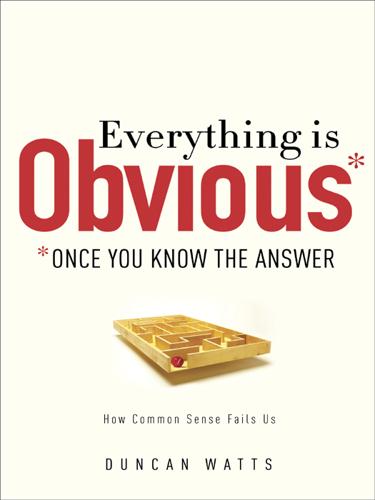
Everything Is Obvious: *Once You Know the Answer
by
Duncan J. Watts
Published 28 Mar 2011
Back then, in fact, the idea that everyone in the world is connected through a giant social network through which information, ideas, and influence might flow, was still sufficiently novel that when my father asked me during one of our regular phone conversations if I’d ever heard of the notion that “everyone in the world is only six handshakes away from the president of the United States,” I assumed it was folklore. And in some sense it was. People have been fascinated with what sociologists call the small-world problem for nearly a century, since the Hungarian poet Frigyes Karinthy published a short story called “Chains” in which his protagonist boasts that he can connect himself to any other person in the world, whether a Nobel Prize winner or a worker in a Ford Motor factory, through a chain of no more than five acquaintances.
…
“The Small-World Phenomenon: An Algorithmic Perspective.” Paper read at Proceedings of the 32nd Annual ACM Symposium on Theory of Computing, at New York. Kleinberg, Jon, and David Easley. 2010. Networks, Crowds, and Markets: Reasoning About a Highly Connected World. Cambridge, UK: Cambridge University Press. Kleinfeld, Judith S. 2002. “The Small World Problem.” Society 39 (2):61–66. Knee, Jonathan A., Bruce C. Greenwald, and Ava Seave. 2009. The Curse of the Mogul: What’s Wrong with the World’s Leading Media Companies. New York: Portfolio. Kocieniewski, David. 2010. “As Oil Industry Fights a Tax, It Reaps Subsidies.” New York Times, July 3. Kohavi, Ron, Roger Longbotham, and Toby Walker. 2010.
…
For more popular accounts, see Watts (2003) and Christakis and Fowler (2009). 3. See Leskovec and Horvitz (2008) for details of the Microsoft instant messenger network study. 4. See Jacobs (1961, pp. 134–35). 5. Milgram did not invent the phrase “six degrees of separation,” referring only to the “small world problem.” Instead, it was the playwright John Guare who wrote a play with that title in 1990. Oddly, Guare has credited the origin of the phrase to Guglielmo Marconi, the Italian inventor and developer of radiotelegraphy, who reportedly said that in a world connected by the telegraph, everyone would be connected to everyone else via only six degrees of separation.

The Start-Up of You: Adapt to the Future, Invest in Yourself, and Transform Your Career
by
Reid Hoffman
and
Ben Casnocha
Published 14 Feb 2012
Jeffrey Travers and Stanley Milgram, “An Experimental Study in the Small World Problem,” Sociometry 35, no. 4 (1969): 425–43, doi:10.1109/TIT.2010.2054490 16. Hazer Inaltekin, Mung Chiang, and H. Vincent Poor, “Average Message Delivery Time for Small-world Networks in the Continuum Limit,” IEEE Transactions on Information Theory 56, no. 9 (2010), 4447–70, doi:10.1109/ TIT.2010.2054490 17. http://blog.okcupid.com/index.php/online-dating-advice-exactly-what-to-say-in-a-first-message/ 18. Brian Uzzi and Jarrett Spiro, “Collaboration and Creativity: The Small World Problem,” American Journal of Sociology 111, no. 2 (2005), 447–504. doi: 10.1086/432782 19.

A Manual for Writers of Research Papers, Theses, and Dissertations, Eighth Edition: Chicago Style for Students and Researchers
by
Kate L. Turabian
Published 14 Apr 2007
If page numbers are not available, you may identify the location of a cited passage in a note by adding a descriptive locator (such as a preceding subheading) following the word under before the URL and access date. N: 4. Brian Uzzi and Jarrett Spiro, “Collaboration and Creativity: The Small World Problem,” American Journal of Sociology 111, no. 2 (September 2005), under “Milgram's Small World Theory,” http://www.journals.uchicago.edu/AJS/journal/issues/v111n2/090090/090090.html (accessed December 19, 2005). B: Uzzi, Brian, and Jarrett Spiro. “Collaboration and Creativity: The Small World Problem.” American Journal of Sociology 111, no. 2 (September 2005). http://www.journals.uchicago.edu/AJS/journal/issues/v111n2/090090/090090.html (accessed December 19, 2005).
…
Articles in online journals might not include page numbers, especially if they are not published in parallel print journals. If page numbers are not available, you may identify the location of a cited passage in a parenthetical citation by adding a descriptive locator (such as a preceding subheading) following the word under. R: Uzzi, Brian, and Jarrett Spiro. 2005. Collaboration and creativity: The small world problem. American Journal of Sociology 111, no. 2 (September). http://www.journals.uchicago.edu/AJS/journal/issues/v111n2/090090/090090.html (accessed December 19, 2005). P: (Uzzi and Spiro 2005, under “Milgram's small world theory”) or (Uzzi and Spiro 2005) Online databases of articles generally list all the elements necessary for citations.

Grouped: How Small Groups of Friends Are the Key to Influence on the Social Web
by
Paul Adams
Published 1 Nov 2011
For more information on Stanley Milgram’s experiments, including challenges to his methods, see the Wikipedia article on Small world experiment. 8. See the 2008 research paper “Planetary-scale views on a large instant-messaging network” by Jure Leskovec and Eric Horvitz (where they analyzed 30 billion conversations among 240 million MSN users). 9. Quote from Stanley Milgram’s 1967 Psychology Today article “The small-world problem.” 10. In his book Six Degrees: The Science of a Connected Age (Norton, 2003), Duncan Watts describes the difficulties in finding the shortest paths between people. 11. See the Wikipedia article titled Dove Campaign for Real Beauty. 4. How our relationships influence us Relationship types and patterns We have unique relationships with everyone we know Each relationship between two people is unique.
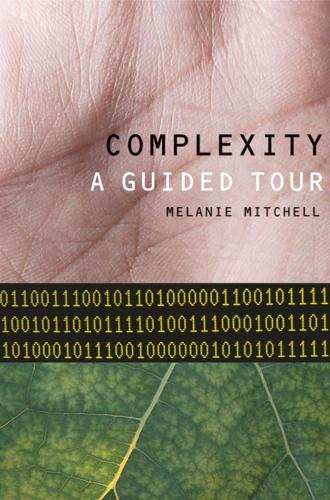
Complexity: A Guided Tour
by
Melanie Mitchell
Published 31 Mar 2009
New York: Harcourt Brace Jovanovich, 1974, p. 76. (Translated by W. Weaver.) Chapter 15 “The Science of Networks”: Parts of this chapter were adapted from Mitchell, M., Complex systems: Network thinking. Artificial Intelligence, 170 (18), 2006, pp. 1194–1212. “Milgram wrote of one example”: From Milgram, S., The small-world problem. Psychology Today 1, 1967, pp. 61–67. “Later work by psychologist Judith Kleinfeld”: see Kleinfeld, Could it be a big world after all? Society, 39, 2002. 228. an “urban myth”: Kleinfeld, J. S., Six degrees: Urban myth? Psychology Today, 74, March/April 2002. “When people experience an unexpected social connection”: Kleinfeld, J.
…
The hierarchical structure of organisms: A scale and documentation of a trend in the maximum. Paleobiology, 27(2), 2001, pp. 405–423. Metropolis, N., Stein, M. L., and Stein, P. R. On finite limit sets for transformations on the unit interval. Journal of Combinatorial Theory, 15(A), 1973, pp. 25–44. Milgram, S. The small-world problem. Psychology Today 1, 1967, pp. 61–67. Millay, E. St. Vincent. Mine the Harvest: A Collection of New Poems. New York: Harper, 1949. Miller, G. A. Some effects of intermittent silence. The American Journal of Psychology, 70, 1957, pp. 311–314. Millonas, M. M. The importance of being noisy.
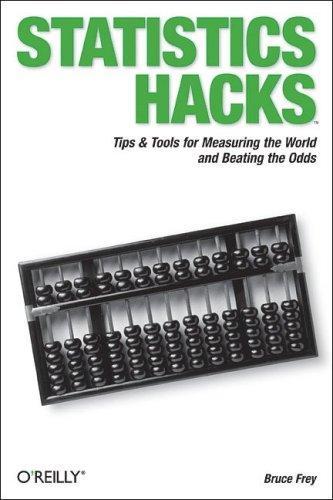
Statistics hacks
by
Bruce Frey
Published 9 May 2006
There is also a popular party trivia game, sometimes called Six Degrees of Kevin Bacon, that attempts to link any actor or actress through a series of movies and other performers until they share a connection with actor Kevin Bacon. The phrase and concept come from a study that considered the small-world problem. Have you ever been at a party or been chatting with a stranger at a coffee shop and discovered that you both know the same person? Social psychologist Stanley Milgram was curious about this phenomenon in the late 1960s (when there were a lot more cocktail parties than there are now). How much overlap was there in social networks?
…
shared variance 2nd short-stacked shuffling cards significance [See statistical significance] simple linear regression [See linear regression] single substitution format six degrees of separation six-sided dice 2nd skips Skorupski, William 2nd slips SLOPE function slot machines small-world problem 2nd 3rd Smart Shuffle (iTunes) Smith, Will Soter, Steven 2nd Spears, Britney 2nd species, discovering specificity splitting hands 2nd 3rd SPSS software 2nd St. Petersburg Paradox standard deviation ACT Central Limit Theorem cut score and defined 2nd of distributions 2nd 3rd effect size and formula linear regression and 2nd normal curve and 2nd 3rd 4th regression formulas and standard error of measurement standard error of the estimate standard error of the mean standardized weights and T scores z score standard error calibrating precision 2nd defined determining Law of Large Numbers overview standard error of measurement defined 2nd formula for 2nd 3rd scores and standard deviation and standard error of the estimate applying defined 2nd determining regression analysis and standard error of the mean applying defined 2nd 3rd 4th standard error of the proportion applying defined sample sizes and standardized scores 2nd standardized weights Stanford-Binet Intelligence Test Stanley, J.C.
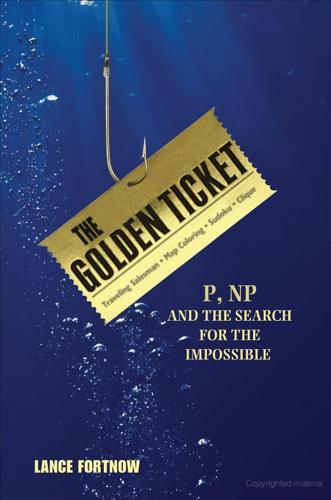
The Golden Ticket: P, NP, and the Search for the Impossible
by
Lance Fortnow
Published 30 Mar 2013
The traveling salesman problems were generated using software from Mark Daskin, http://sitemaker.umich.edu/msdaskin/software. Chapter 2 Nearly everything in this chapter, except the section on Occam’s razor, is a figment of my imagination meant to illustrate the unlikely world of P = NP. Chapter 3 On Milgram’s experiment, see Stanley Milgram, “The Small World Problem,” Psychology Today 2, no. 1 (1967): 60–67. The Bacon number calculation is from the Internet Movie Database. For a readable story of the four-color problem, see Robin Wilson, Four Colors Suffice: How the Map Problem Was Solved (Princeton, NJ: Princeton University Press, 2004). Chapter 4 The quotation from Cook is actually a paraphrase in modern terminology of the original quotation from his seminal paper.
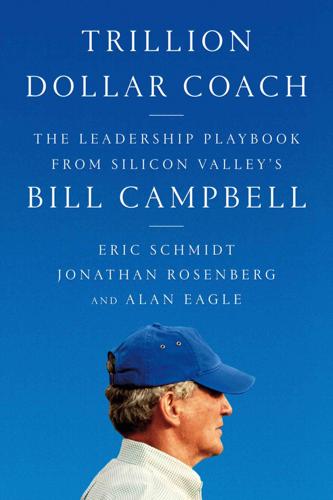
Trillion Dollar Coach: The Leadership Playbook of Silicon Valley's Bill Campbell
by
Eric Schmidt
,
Jonathan Rosenberg
and
Alan Eagle
Published 15 Apr 2019
Chapter 2: Your Title Makes You a Manager. Your People Make You a Leader. 1.Fariborz Damanpour, “Organizational Innovation: A Meta-Analysis of Effects of Determinants and Moderators,” Academy of Management Journal 34, no. 3 (September 1991): 555–90; Brian Uzzi and Jarrett Spiro, “Collaboration and Creativity: The Small World Problem,” American Journal of Sociology 111, no. 2 (September 2005): 447–504. 2.Nicholas Bloom, Erik Brynjolfsson, Lucia Foster, Ron S. Jarmin, Megha Patnaik, Itay Saporta-Eksten, and John Van Reenen, “What Drives Differences in Management,” Centre for Economic Performance Research discussion paper, No.
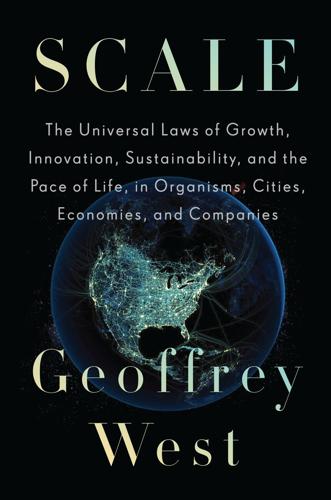
Scale: The Universal Laws of Growth, Innovation, Sustainability, and the Pace of Life in Organisms, Cities, Economies, and Companies
by
Geoffrey West
Published 15 May 2017
A lot of this fascinating work has been carried out or stimulated by many of my colleagues associated with the Santa Fe Institute. It’s a Small World: Stanley Milgram and Six Degrees of Separation You are very likely familiar with the notion of “six degrees of separation.” This was articulated by the highly imaginative social psychologist Stanley Milgram in the 1960s and is often referred to as “the small world problem.”9 It arose from answering the fascinating question: how many people on average separate you from any other arbitrary random person in the country? An easy way to conceptualize this is to think of it graphically by first representing each person as a dot on a piece of paper; this is called a node.
…
See also quarter-power scaling networks and origins of quarter-power allometric scaling, 103–5 ¾ power, 25–27, 93, 155, 458n universality and the magic number four, 93–99 scaling of cities, 28–32, 271–81, 341–42 between different urban systems, 279 metrics, 271–75, 276–77, 279–80 physical infrastructure, 274–75 scaling curves, 276–77, 280 scaling of companies, 32–33, 385–92, 408 “scattering experiments,” 78 “scattering theory,” 78 Schläpfer, Markus, 352 Schrödinger, Erwin, 84 Science (journal), 54, 302–3, 436 science of cities, 7, 8–9, 215, 269–324 christalls vs. fractals, 288–95 cities as social incubators, 295–304 consequences and predictions, 325–78 Dunbar and numbers, 304–9 integrating social with physical, 315–24 scaling of cities, 271–81 social networks and cities, 281–88 Zipf and word use, 309–15 science of companies, 7, 8–9, 32–33, 379–410 company mortality, 393–410 myth of open-ended growth, 391–93 science of complexity, 23, 79–81 science of materials, 39–42 science of wars, 132–35 scientific method and theory, 48, 106–11, 181, 441–42 Seaborg, Glenn, 243 Seattle, 248, 261, 360 Second Law of Thermodynamics, 14, 71, 233, 236, 237 “second order,” 110 seismometers, 46 self-interest and greed, 286–88 self-organization, 23, 282–83 self-similarity, 91–93, 128, 155 origin of magic number four and, 126–30 Senseable City Lab, 340 Seventh Seal, The (film), 179–80 Shahnameh (Ferdowsi), 218–19 Shakespeare, William, 63, 252–53 Shanghai Stock Exchange, 389–90, 390 Shaw, George Bernard, 226 shipbuilding, 63, 66–75, 177 Shuman, Frank, 241 Silicon Valley, 248–49, 265, 358, 359–60, 432, 442, 447 similitude, 75–78 Simon, Herbert, 369–70, 382 Simon, Julian, 232–33 simplicity underlying complexity, 90–93, 116 Singapore, 354 singularity, 422. See also finite-time singularity; technological singularity Singularity Is Near, The (Kurzweil), 422 Sisyphus, 418, 423, 424 “six degrees of separation,” 296–97, 301, 304–5 sleep, 6, 12 “slum clearance,” 260, 261, 263 “small world problem,” 296–97, 302–4, 305 smart cities, 270, 294, 338, 346 Smith, Adam, 380 social brain hypothesis, 308–9, 315–16 social capital, 278, 286, 372, 392 Social Darwinism, 287 social incubators, cities as, 295–304 social media, 332, 340 social metabolic rate, 13 social metabolism, 13, 373–74, 415 social networks, 344–45 cities and, 281–88, 295–304, 326–27 Dunbar and numbers, 304–9 impedance matching, 123 integrating physical infrastructure with, 315–24 social physics, 56–57 socioeconomic diversity and business activity, 363–71, 367 “socioeconomic space,” 285 socioeconomic time, 326–32 solar energy, 236, 240–42 solar system, 37, 108–9 Sornette, Didier, 415, 418, 425 Soros, George, 364 South African coast, 140, 144 space filling, 27, 112–13, 129, 201, 284 Spinoza, Baruch, 172 sports rankings, 352–53 square-cube law, 39–42, 43, 58, 59, 158–59 standardized measures, 76 Standard Model of particle physics, 338–39 standard of living, 184, 185–86, 229, 234–35 Standard & Poor’s, 385, 404 Stanford University, 265, 301, 303, 329–30, 361, 435–36 steam engines, 69 Stevenage, 263–65, 267 Stewart, Potter, 20 stock markets, 142, 144, 389–90 Stokes, George, 71 stone arch bridges, 61 strength of materials, 42–45 string theory, 85, 130, 225, 429 Strogatz, Steven, 297–98, 300–301 structuralism, 87 Strumsky, Debbie, 356, 364 Strutt, Edward, 78 Strutt & Parker, 78 sublinear scaling, 19, 28, 173, 374, 412–13 cities, 272, 273, 274–75, 288, 295, 321, 372, 374–75, 388 companies, 391–92, 408 patents, 2, 2n, 4, 29, 276, 357, 386 Sumatra earthquake of 2010, 46 supercentenarians, 188–89, 191 Superconducting Super Collider (SSC), 82–83 superexponential growth, 413–14, 414, 417 superlinear scaling, 18, 19, 29, 374 cities, 275–76, 280, 304, 318, 319, 321, 326–27, 342, 355–56, 370, 374, 391–92 companies, 408, 413–14, 414 Superman, 43–45, 44, 161 survival analysis, 402–3, 405–6 “survival of the fittest,” 87, 89, 403 survivorship curves companies, 397, 398–400, 400–402 human, 189–94, 191, 192 Swift, Jonathan, 128 Swiss Federal Institute of Technology, 271 Sydney Opera House, 259 Szell, Michael, 352 Takamatsu Corporation, 406 Taleb, Nassim, 383 Tange, Kenzo, 248, 258 Taylor Walker (London), 224–26 technological singularity, 28–32, 420, 422, 424 telescopes, 37 temperature, 20–21, 109 exponential scaling of, 173–78 extending life span and, 203–4 temperature dependence of life span, 175, 176, 177, 203–4 temperature rise, 237 terminal units, 113–14, 151, 201–2, 284 terrorist attacks, 134 Tesla, Inc., 124, 403–4 Tesla, Nikola, 123–24 Texas, flow of transport, 292–94, 293 Thames Tunnel, 64 Theory of Everything (ToE), 429–30, 444 theory of relativity, 107–8, 115, 339, 422, 428, 429 thermodynamics, 14, 69, 71, 233, 236, 237 Thiel, Peter, 184 Thomas, Warren, 52–53 Thomas Edison Company, 123–24 Thompson, D’Arcy Wentworth, 86–88, 97, 111, 181 ¾ power scaling law, 25–27, 93, 155, 458n time dilation, 332 tipping points, 16, 24, 157–58, 382, 463n total market capitalization, 379, 389–90, 390 Tottenham Hotspur, 187 “Toward a Metabolic Theory of Ecology” (Brown, Savage, Allen, Gillooly), 174 “toy model,” 109 traffic flows, 292–94 traffic gridlock, 332–33 transaction costs, 380, 381 transportation time, 332–35 travel time, 329–30, 332–35, 346–47 treadmills, 328, 412, 418 Treatise on Man (Quetelet), 56 trees, 116–17, 121, 121–22, 172, 459–60n scaling exponents, 147, 150, 150–51 trial and error, 69–71, 74–75 Triumph of the City, The (Glaeser), 213 tumors, 6, 15, 27, 172 growth curves, 170, 171 turbulence, 72 Tusko (elephant), 53 Twitter, 296, 332, 340, 447 Two New Sciences (Galileo), 38–42 Tycho Brahe, 439 Tyrannosaurus rex, 159 UCLA School of Medicine, 205 Ultimate Resource, The (Simon), 232–33 United Nations Millennium Development Goals, 230–31 unit of length, 135–37 universality concept of, 76–77 magic number four and, 93–99 “universal laws of life,” 81, 87 universal time, 423–24 University of Modena, 249 University of New Mexico (UNM), 105, 106 urbanization, 6–7, 8–10, 214–15, 223–26 global sustainability and, 28–32, 213–15 life span and, 184–85, 191, 192–93 Urbanocene, 212, 214–15, 236, 262 urban overload, 303–4 urban planning and design, 253–58, 261–67, 290, 294–95 urban psychology, 302–4 urban renewal, 260, 261, 263 urban sociology, 266 Utzon, Jørn, 259 van der Leeuw, Sander, 249–50 van Gogh, Vincent, 189 variational principle, 115–16 Vasa (ship), 70, 459n Vinge, Vernor, 422 von Neumann, John, 424 wages in cities, 30, 275, 276, 278, 281, 285–86 Walford, Roy, 205–6, 207 walking pace, 334, 335–36, 336 Wallace, Alfred Russel, 89, 228 Walmart, 32, 388–89, 394 wars, mathematical analysis of, 132–35 washing machine, 152–53 Washington, D.C., 266–67 Washington Square (New York City), 260, 261 water supply, 360–63 Watson, James, 84, 437 watts (W), 457n Watts, Duncan, 297–98, 300–301 wave theory of light, 126 wealth creation and ranking of cities, 355–59 “wear and tear,” 15, 88, 199–200 decline of body functions with age, 195, 197, 201, 202 weight lifting, 48–51, 50, 352–53 Welwyn Garden City, 255 West, Jacqueline, 187, 317 West, Louis, 52–53 whales, 3, 5, 16, 27, 80, 90–91, 92, 155, 159–60.
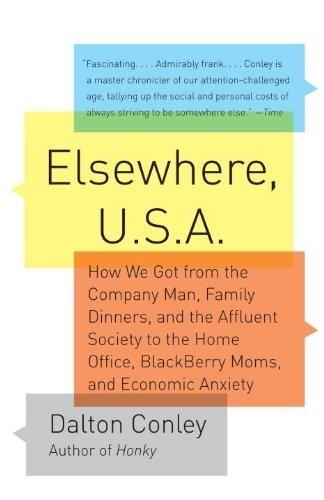
Elsewhere, U.S.A: How We Got From the Company Man, Family Dinners, and the Affluent Society to the Home Office, BlackBerry Moms,and Economic Anxiety
by
Dalton Conley
Published 27 Dec 2008
They have not, perhaps, considered the more fundamental changes in social relations that we are all going through. 2. Theda Skocpol, “Civic Transformation and Inequality in the Contemporary United States,” in Social Inequality, ed. Kathryn M. Neckerman (New York: Russell Sage Foundation, 2004), pp. 729-68. 3. Stanley Milgram, “The Small World Problem,” Psychology Today, May 1967, pp. 60-67. 4. Mark S. Granovetter, “The Strength of Weak Ties,” American Journal of Sociology 78, no. 6 (May 1973): 1360-80. 5. Damon Centola, Robb Willer, and Michael Macy “The Emperor’s Dilemma: A Computational Model of Self-Enforcing Norms,” American Journal of Sociology 110, no. 4 (January 2005): 1009-40.

Facebook: The Inside Story
by
Steven Levy
Published 25 Feb 2020
In the story, one of the subjects—a Hungarian intellectual like the author—met the challenge of making the connection to a random riveter at the Ford Motor Company. Karinthy’s concept kicked around the social-science world for some decades until some researchers in the 1960s and ’70s tried to prove it with the limited computer power of their time. In 1967, sociologist Stanley Milgram published a Psychology Today article on what was then called the “small world problem.” In a study published two years later, he and his coauthor tried to connect random people in Nebraska with those in Boston and found that “the mean number of intermediaries between starters and targets is 5.2.” In 1990, the concept would gain wide cultural currency when playwright John Guare used it to illuminate his eponymous play, Six Degrees of Separation, adapted for film in 1993.
…
Norton, 2003). “Chain-Links”: The 1929 short story is out of print in English, but a translation of Karinthy’s “Chain-Links” by Adam Makkai is available on the website https://djjr-courses.wikidot.com. published two years later: Jeffrey Travers and Stanley Milgram, “An Experimental Study of the Small World Problem,” Sociometry 32, no. 4 (December 1969), 425–443. the pending patent: Teresa Riordan, “Idea for Online Networking Brings Two Entrepreneurs Together,” New York Times, December 1, 2003. Mark Elliot Zuckerberg was born: There are a number of good accounts of Zuckerberg’s early life that I drew from besides personal interviews, including his parents.

The Perfect Bet: How Science and Math Are Taking the Luck Out of Gambling
by
Adam Kucharski
Published 23 Feb 2016
The Newtonian Casino (London: Penguin, 1990). 10The orbiting roulette ball: The majority of details and quotes in this section are taken from Thorp, Edward. “The Invention of the First Wearable Computer.” Proceedings of the 2nd IEEE International Symposium on Wearable Computers (1998), 4. 13participants were asked to help: Milgram, Stanley. “The Small-World Problem.” Psychology Today 1, no. 1 (May 1967): 61–67. 13an average of 3.74 degrees of separation: Backstrom, Lars, Paolo Boldi, Marco Rosa, Johan Ugander, and Sebastiano Vignal. “Four Degrees of Separation” (Cornell University Library, January 2012). http://arxiv.org/abs/1111.4570. 14Another attendee was a young physicist: Gleick, “Chaos.” 14By taking measurements: Bass, Newtonian Casino. 14When a new paper on roulette appeared: Small, Michael, and Chi Kong Tse.

Skin in the Game: Hidden Asymmetries in Daily Life
by
Nassim Nicholas Taleb
Published 20 Feb 2018
And if you dream of making people use probability in order to make decisions, I have some news: more than ninety percent of psychologists dealing with decision making (which includes such regulators and researchers as Cass Sunstein and Richard Thaler) have no clue about probability, and try to disrupt our efficient organic paranoias. FIGURE 4. The classical “large world vs small world” problem. Science is currently too incomplete to provide all answers—and says it itself. We have been so much under assault by vendors using “science” to sell products that many people, in their mind, confuse science and scientism. Science is mainly rigor in the process. Further, I find it incoherent to criticize someone’s superstitions if these are meant to bring some benefits, while at the same time having no problemo with the optical illusions in Greek temples.

Networks, Crowds, and Markets: Reasoning About a Highly Connected World
by
David Easley
and
Jon Kleinberg
Published 15 Nov 2010
Newman, Danuta M. Skowron-ski, and Robert C. Brunham. Network theory and SARS: Predicting outbreak diversity. Journal of Theoretical Biology, 232:71–81, 2005. [291] Donna Miles. Bush outlines strategy for victory in terror war. American Forces Press Service, 6 October 2005. [292] Stanley Milgram. The small-world problem. Psychology Today, 2:60–67, 1967. [293] Stanley Milgram, Leonard Bickman, and Lawrence Berkowitz. Note on the drawing power of crowds of different size. Journal of Personality and Social Psychology, 13(2):79–82, October 1969. [294] Paul Milgrom and Nancy Stokey. Information, trade and common knowledge.
…
Responses to social exchange and social exclusion in networks. Social Forces, 75:1031–1049, 1997. [384] Shane Thye, David Willer, and Barry Markovsky. From status to power: New models at the intersection of two theories. Social Forces, 84:1471–1495, 2006. [385] Jeffrey Travers and Stanley Milgram. An experimental study of the small world problem. Sociometry, 32(4):425–443, 1969. [386] Paul E. Turner and Lin Chao. Prisoner’s Dilemma in an RNA virus. Nature, 398:441–443, April 1999. [387] Paul E. Turner and Lin Chao. Escape from Prisoners Dilemma in RNA phage φ6. American Naturalist, 161(3):497–505, March 2003. [388] Brian Uzzi. The sources and consequences of embeddedness for economic performance of organizations: The network effect.
…
Computer networks as social networks: Collaborative work, telework, and virtual community. Annual Review of Sociology, 22:213–238, 1996. [405] Michael D. Whinston. Tying, foreclosure, and exclusion. American Economic Review, 80(4):837–859, September 1990. 828 BIBLIOGRAPHY [406] Harrison C. White. Search parameters for the small world problem. Social Forces, 49(2):259–264, December 1970. [407] David Willer (editor). Network Exchange Theory. Praeger, 1999. [408] Carsten Wiuf and Jotun Hein. On the number of ancestors to a dna sequence. Genetics, 147:1459–1468, 1997. [409] B. Wotal, H. Green, D. Williams, and N. Contractor. WoW!
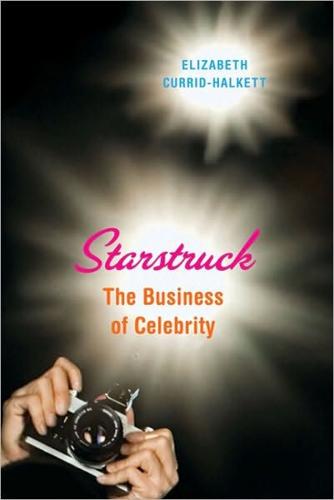
Starstruck: The Business of Celebrity
by
Currid
Published 9 Nov 2010
By this theory, I could connect to a fisherman in Japan through six people: This finding has become known as the “small-world phenomenon,” or “six degrees of separation” in common parlance. Another study looking at linkages between film stars found that actors tend to be separated by only 4 degrees. See Stanley Milgram, “The Small-World Problem,” Psychology Today 1, no. 1 (May 1967): 61–67; Watts, Small Worlds; Watts and Strogatz, “Collective Dynamics of ‘Small-World’ Networks; Goel, Muhamad, and Watts, “Social Search in ‘Small-World’ Experiments.” Since the late 1990s, social scientists have been studying the average connectedness of people around the world.
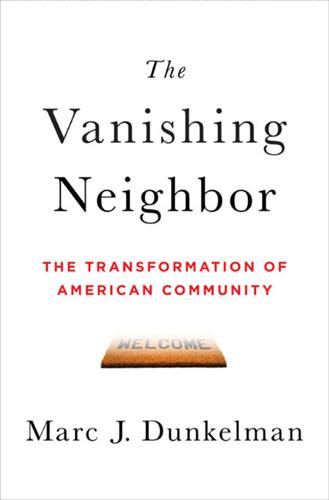
The Vanishing Neighbor: The Transformation of American Community
by
Marc J. Dunkelman
Published 3 Aug 2014
Christakis and James H. Fowler, Connected: The Surprising Power of Our Social Networks and How They Shape Our Lives—How Your Friends’ Friends’ Friends Affect Everything You Feel, Think, and Do (New York: Back Bay Books, 2009), 162–4; Brian Uzzi and Jarrett Spiro, “Collaboration and Creativity: The Small World Problem,” American Journal of Sociology 111, no. 2 (September 2005): 447–504. 20Jane Jacobs, The Economy of Cities (New York: Vintage: 1970), 85–93, 96–97, 181. 21Jacobs, The Economy of Cities, 142. 22Jacobs, The Economy of Cities, 55. 23Mark S. Granovetter, “The Strength of Weak Ties,” American Journal of Sociology 78, no. 6 (May 1973): 1360–80.
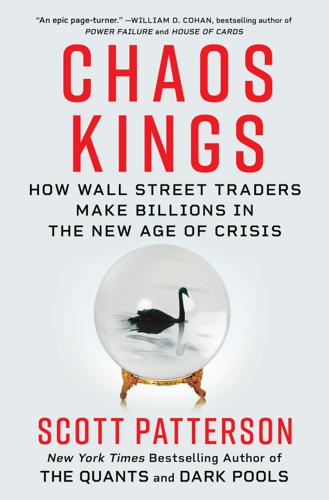
Chaos Kings: How Wall Street Traders Make Billions in the New Age of Crisis
by
Scott Patterson
Published 5 Jun 2023
Literary fiction craved sensibility, carefully constructed tales of cause and effect. It banished the incomprehensible—the unforeseen, unlikely disasters that are relegated to the less-respectable genres of fantasy and science fiction. Literary fiction has as its domain the little life, the daily comings and goings and small-world problems of middle-class characters such as Flaubert’s Emma Bovary and James Joyce’s Leopold Bloom. (Outliers to this phenomenon might include epics such as War and Peace and Moby-Dick.) Ghosh wrote: “The central credo of this doctrine was ‘nothing could change otherwise than the way things were seen to change in the present.’

Transaction Man: The Rise of the Deal and the Decline of the American Dream
by
Nicholas Lemann
Published 9 Sep 2019
Reid Hoffman’s association with Silicon Valley: Reid Hoffman’s story comes from author’s interviews with Hoffman. “At PayPal, we broke the rules”: Reid Hoffman, Blitzscaling, Currency, 2018, 180. “a massively better idea”: Author’s interview with Reid Hoffman. Six Degrees: Jeffrey Travers and Stanley Milgram, “An Experimental Study of the Small World Problem,” Sociometry, Volume 32, Number 4 (December 1969), 425–43. Academics had been studying social networks: See Jacob Moreno, Who Shall Survive? Foundations of Sociometry, Group Psychotherapy and Sociodrama, Beacon, 1953. “The Strength of Weak Ties”: Mark S. Granovetter, “The Strength of Weak Ties,” American Journal of Sociology, Volume 78, Number 6 (May 1973), 1360–80.

Mind in Motion: How Action Shapes Thought
by
Barbara Tversky
Published 20 May 2019
The book of trees: Visualizing branches of knowledge. Princeton, NJ: Princeton Architectural Press. Six degrees of separation Dodds, P. S., Muhamad, R., & Watts, D. J. (2003). An experimental study of search in global social networks. Science, 301(5634), 827–829. Travers, J., & Milgram, S. (1967). The small world problem. Psychology Today, 1(1), 61–67. Social networks Henderson, M. D., Fujita, K., Trope, Y., & Liberman, N. (2006). Transcending the “here”: The effect of spatial distance on social judgment. Journal of Personality and Social Psychology, 91(5), 845. Yu, L., Nickerson, J. V., & Tversky, B. (2010, August 9–11).
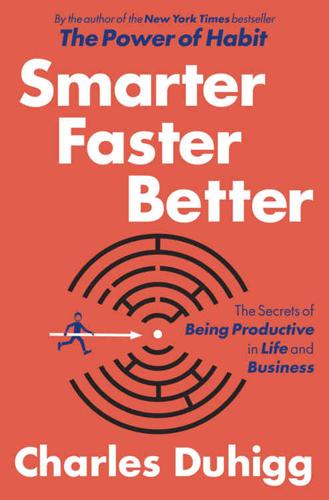
Smarter Faster Better: The Secrets of Being Productive in Life and Business
by
Charles Duhigg
Published 8 Mar 2016
Falk-Krzesinski et al., “Advancing the Science of Team Science,” Clinical and Translational Science 3, no. 5 (2010): 263–66; Ginger Zhe Jin et al., The Reverse Matthew Effect: Catastrophe and Consequence in Scientific Teams (working paper 19489, National Bureau of Economic Research, 2013); Brian Uzzi and Jarrett Spiro, “Do Small Worlds Make Big Differences? Artist Networks and the Success of Broadway Musicals, 1945–1989” (unpublished manuscript, Evanston, Ill., 2003); Brian Uzzi, and Jarrett Spiro, “Collaboration and Creativity: The Small World Problem,” American Journal of Sociology 111, no. 2 (2005): 447–504; Brian Uzzi, “A Social Network’s Changing Statistical Properties and the Quality of Human Innovation,” Journal of Physics A: Mathematical and Theoretical 41, no. 22 (2008); Brian Uzzi, Luis A.N. Amaral, and Felix Reed-Tsochas, “Small-World Networks and Management Science Research: A Review,” European Management Review 4, no. 2 (2007): 77–91.

Culture and Prosperity: The Truth About Markets - Why Some Nations Are Rich but Most Remain Poor
by
John Kay
Published 24 May 2004
Democracy in America. Ed. and trans. H. C. Mansfield and D. Winthrop. Chicago: University of Chicago Press, 2000. Bibliography { 409} Transparency International. 2001. Global Corruption Report. Berlin: Transparency International. Travers,]., and S. Milgram. 1969. "An Experimental Study of the Small World Problem." Sociometry 32 (4) (December): 425-33. Trump, D., with T. Schwartz. 1987. Trump: The Art ofthe Deal. London: Century. Tsurumi, M., ed. 2001. Financial Big Bang in Asia. Aldershot: Ash gate. Tudge, C. 1998. Neanderthals) Bandits and Farmers: How Agriculture Really Began. London: Weidenfield and Nicolson.
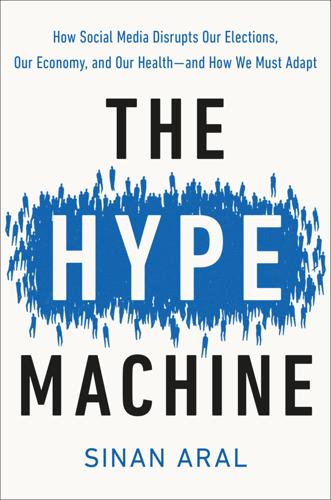
The Hype Machine: How Social Media Disrupts Our Elections, Our Economy, and Our Health--And How We Must Adapt
by
Sinan Aral
Published 14 Sep 2020
“forbidden triad”: Mark Granovetter, “The Strength of Weak Ties,” American Journal of Sociology 78 (1973): 1360–80. “small worlds”: Duncan J. Watts and Steven H. Strogatz, “Collective Dynamics of ‘Small-World’ Networks,” Nature 393, no. 6684 (1998): 440. six degrees of separation: J. Travers and Stanley Milgram, “An Experimental Study of the Small World Problem,” Sociometry 32 (1969); Duncan J. Watts, “Networks, Dynamics, and the Small World Phenomenon,” American Journal of Sociology 105, no. 2 (1999): 493–527. Facebook recruited users within: This “group-based targeting,” incidentally, is the same go-to-market strategy advocated by Jeffrey Rohlfs in his seminal paper on network effects published in 1974 and reiterated onstage by Sean Parker in conversation with Jimmy Fallon, in reference to Facebook’s go-to-market strategy, at the NextWork Conference in 2011 (see footnote in Chapter 5).

Handbook of Modeling High-Frequency Data in Finance
by
Frederi G. Viens
,
Maria C. Mariani
and
Ionut Florescu
Published 20 Dec 2011
Foundations of technical analysis: computational algorithms, statistical inference, and empirical implementation. J Finance 2000;4:1705–1765. McConnell J, Servaes H. Additional evidence on equity ownership and corporate value. J Financ Econ 1990;27:595–612. Mikkelson WH, Ruback R. An empirical analysis of the interim equity investment process. J Financ Econ 1985;14:523–553. Milgram S. The small world problem. Psychol Today 1967;2:60–7. Moody J, Saffell M. Learning to trade via direct reinforcement. IEEE Trans Neural Network 2001;12:875–889. Morck R, Shleifer A, Vishny R. Management ownership and corporate performance: an empirical analysis. J Financ Econ 1988;20:293–316. Moyer CR. Forecasting financial failure: a re-examination.
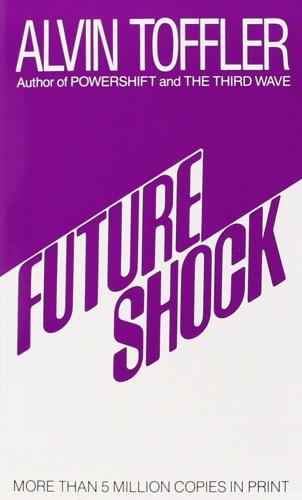
Future Shock
by
Alvin Toffler
Published 1 Jun 1984
See also: [84], p. 71. 113 S.R.I. quote is from [183], p. 148. 116 Class differences in mobility are discussed in "The Human Measure," by Leonard Duhl in [51], p. 138 and in "Urban Design and Mental Health," by Leonard Duhl in AIA Journal, March, 1961, p. 48. 117 Lipset and Bendix [242], p. 249. 117 Warner quoted from [350], p. 51 and [96], p. 62. 120 Florence estimate is drawn from "The Pattern of Cities to Come," New Society, March 10, 1966, p. 6. 120 Gurevitch study and Milgram data can be found in "The Small-World Problem," by Stanley Milgram in Psychology Today, May, 1967, pp. 61-67. 120 The Nebraska study is detailed in "The Primary Relations of Middle-Class Couples," by Nicholas Babchuk and Alan P. Bates in [122], p. 126. 121 Pupil turnover: "The Schoolhouse in the City," a report by the Educational Facilities Laboratories, Inc., 1966, p. 8.

Dark Mirror: Edward Snowden and the Surveillance State
by
Barton Gellman
Published 20 May 2020
inspired a website: The Oracle of Bacon, http://oracleofbacon.org. Two hops, through Rourke: The Oracle of Bacon site uses the term “Bacon Number” in place of “hop.” It assigns Johansson, for example, a Bacon Number of 2. three links in the chain: See, for example, Stanley Milgram, “The Small World Problem,” Psychology Today 1, no. 1 (1967). “Under three hundred”: A panel appointed by President Obama later disclosed that the number was 288. See President’s Review Group on Intelligence and Communications Technologies, Liberty and Security in a Changing World, December 12, 2013, p. 102, https://obamawhitehouse.archives.gov/sites/default/files/docs/2013-12-12_rg_final_report.pdf.

Why Stock Markets Crash: Critical Events in Complex Financial Systems
by
Didier Sornette
Published 18 Nov 2002
Continuous-Time Finance (Blackwell, Cambridge, U.K.). 295. Meyer, F. (1947). L’accélération évolutive. Essai sur le rythme évolutif et son interprétation quantique (Librairie des Sciences et des Arts, Paris). 296. Meyer, F. (1954). Problématique de l’évolution (Presses Universitaires de France, Paris). 297. Milgram, S. (1967). The small world problem, Psychology Today 2, 60–67. 298. Miller, M. (1991). Financial Innovations and Market Volatility (Basil Blackwell, Cambridge, MA). 299. Miller, M. H. and Modigliani, F. (1961). Divident policy, growth and the valuation of shares, Journal of Business 34, 411–433. r efe rences 411 300. Miltenberger, P., Sornette, D., and Vanneste, C. (1993).
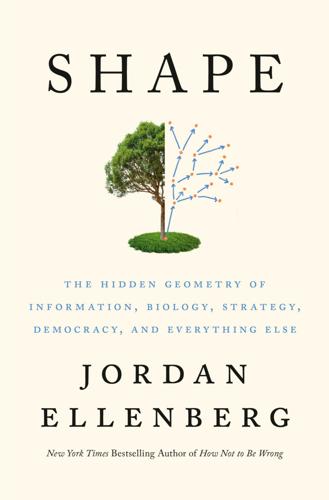
Shape: The Hidden Geometry of Information, Biology, Strategy, Democracy, and Everything Else
by
Jordan Ellenberg
Published 14 May 2021
Feld, “Why Your Friends Have More Friends Than You Do,” American Journal of Sociology 96, no. 6 (1991): 1464–77. Duncan Watts and Steven Strogatz: Duncan J. Watts and Steven H. Strogatz, “Collective Dynamics of ‘Small-World’ Networks,” Nature 393, no. 6684 (1998): 440–42. Stanley Milgram is the face: See Judith S. Kleinfeld, “The Small World Problem,” Society 39, no. 2 (2002): 61–66, for an informative depiction, using extensive research in Milgram’s archives, of the gap between Milgram’s scientific findings and the way he presented them in the popular press. smallness of the networked world: For the history of research on small-world networks I am indebted to Duncan Watts, Small Worlds: The Dynamics of Networks Between Order and Randomness (Princeton: Princeton University Press, 2003), and Albert-László Barabási, Mark Newman, and Duncan Watts, The Structure and Dynamics of Networks (Princeton: Princeton University Press, 2006).
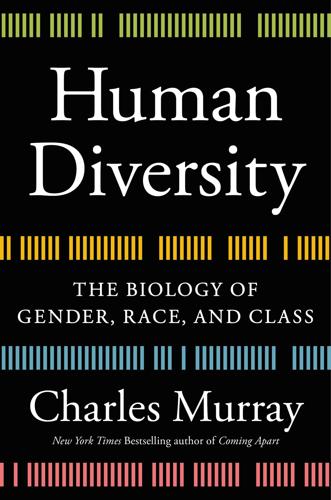
Human Diversity: The Biology of Gender, Race, and Class
by
Charles Murray
Published 28 Jan 2020
E.g., Sporns (2006); He, Chen, and Evans (2007). The model was initially proposed in Watts and Strogatz (1998). 81. The idea was made famous by Stanley Milgram. His data didn’t actually prove his point in the real world, though the idea behind it makes mathematical sense. Stanley Milgram, “The Small World Problem,” Psychology Today, May 1967: 60–67. 82. E.g., Kansaku, Yamaura, and Kitazawa (2000); Gur, Alsop, Glahn et al. (2000); Clements, Rimrodt, Abel et al. (2006). 83. Yan, Gong, Wang et al. (2011): 452. 84. Ingalhalikar, Smith, Parker et al. (2014): 825. 85. Hänggi, Fövenyi, Liem et al. (2014): 10. 86.

The Empathic Civilization: The Race to Global Consciousness in a World in Crisis
by
Jeremy Rifkin
Published 31 Dec 2009
Translated from Hungarian and annotated by Adam Makkai and Eniko Janko. Cited in “Six Degrees of Separation.” Wikipedia. 129 de Sola Pool, Ithiel, and Manfred Kochen. “Contacts and Influence.” Social Networks. Vol. 1. No. 1. 1978-1979. p. 42. 130 Travers, Jeffrey, and Milgram Stanley. “An Experimental Study of the Small World Problem.” Sociometry. Vol. 32. No. 4. December 1969. pp. 425-443. 131 Kleinfeld, Judith. “Could It Be a Big World After All?” University of Alaska at Fairbanks. Society 2002. www.uaf.edu/northern/big_world.html 132 Lescovec, Jure, and Horvitz, Eric. “Worldwide Buzz: Planetary-Scale Views on a Large Instant-Messaging Network” Microsoft Technical Report MSR-TR-2006-186.
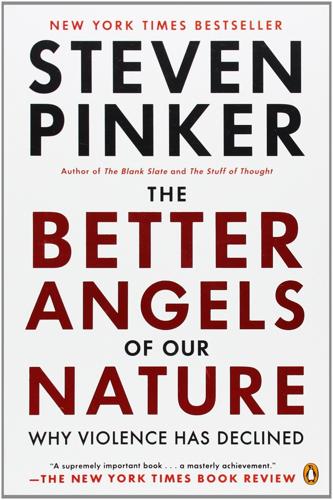
The Better Angels of Our Nature: Why Violence Has Declined
by
Steven Pinker
Published 24 Sep 2012
Kinzey, ed., The evolution of human behavior: Primate models. Albany, N.Y.: SUNY Press. Tooley, M. 1972. Abortion and infanticide. Philosophy & Public Affairs, 2, 37–65. Toye, R. 2010. Churchill’s empire: The world that made him and the world he made. New York: Henry Holt. Travers, J., & Milgram, S. 1969. An experimental study of the small-world problem. Sociometry, 32, 42 5–43 . Trivers, R. L. 1971. The evolution of reciprocal altruism. Quarterly Review of Biology, 46, 35–57. Trivers, R. L. 1972. Parental investment and sexual selection. In B. Campbell, ed., Sexual selection and the descent of man. Chicago: Aldine. Trivers, R. L. 1974.